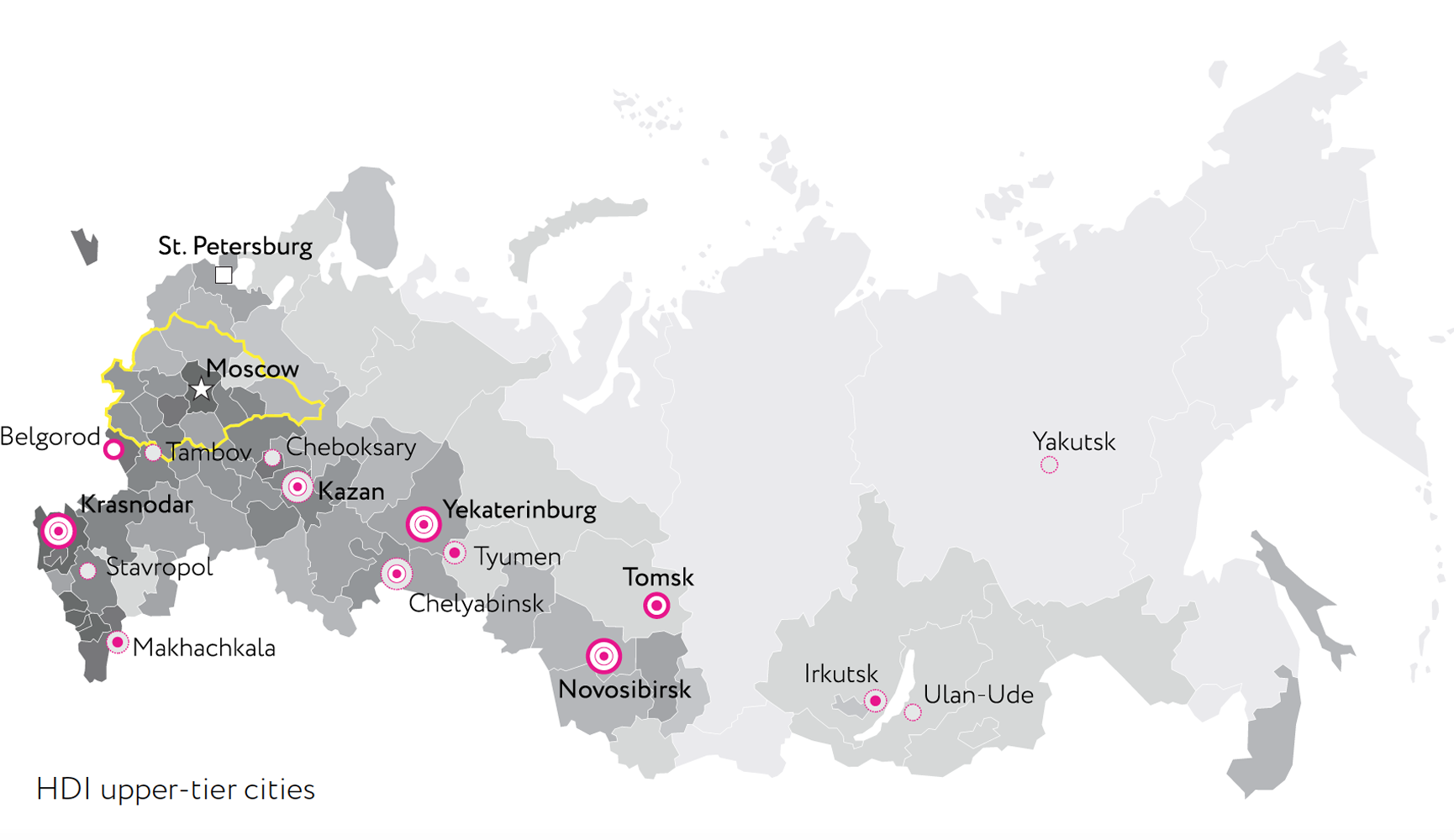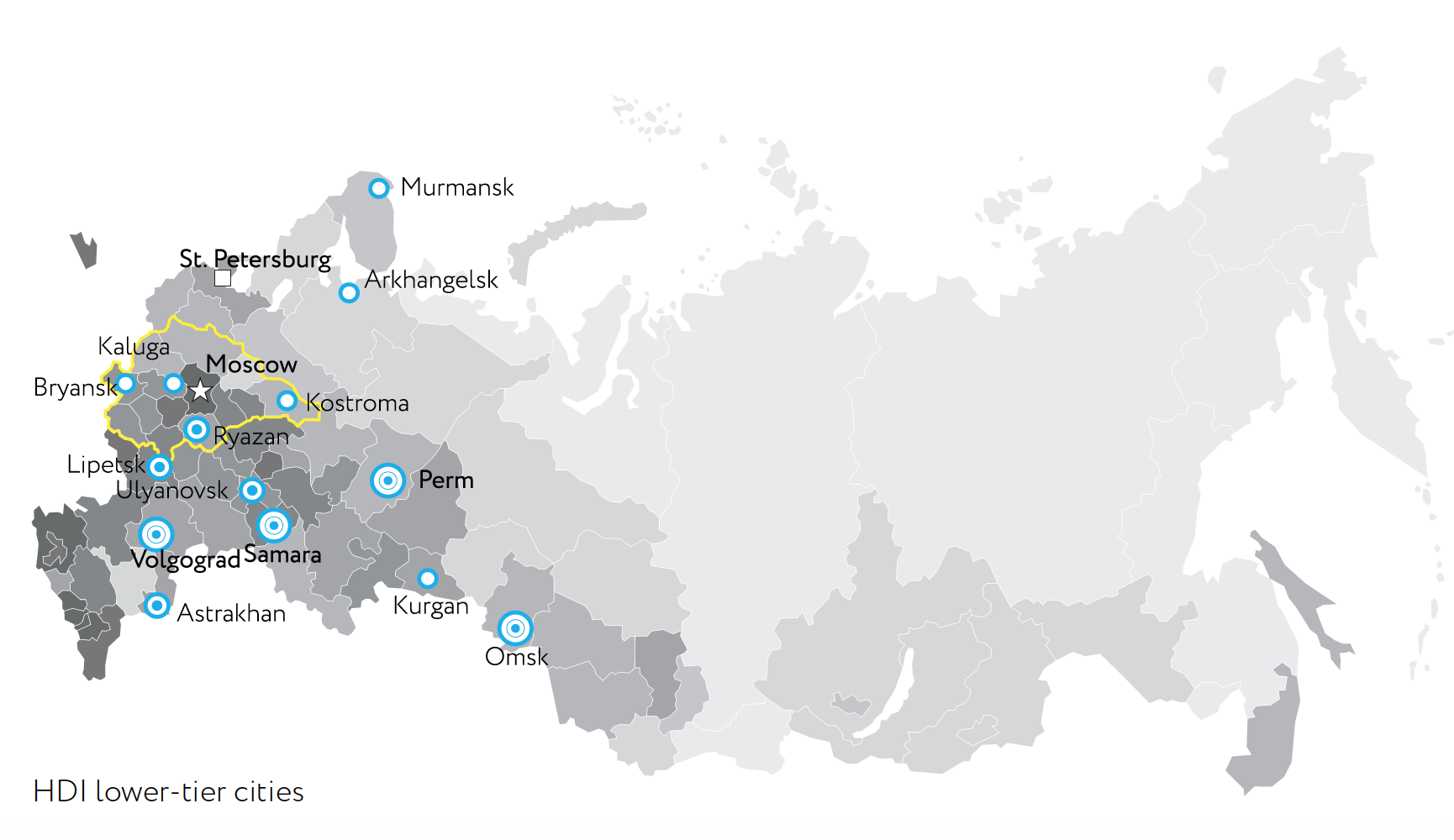- Timeframe
- Client
2014
Moscow Urban Forum
According to the United Nations Development Programme (UNDP), human development is based substantively on education, healthcare, and household income. Novaya adapted and applied the UNDP method for measuring human development as part of a collaborative study of Russian cities.
Cluster analysis helped distinguish four groups of residents based on their attitudes toward participation in improving local environments. We also examined Human Development Index (HDI) values in relation to migration patterns and urban infrastructure. Finally, the team studied internet and social media penetration, including online diffusion of trends and the geography of virtual networks.

The internet is a vital part of today’s urban environments, serving as a conduit of innovation and as a means of coordinating social action.
The Novaya team was the first to test the assumption that internet penetration and the diversity of a city’s virtual sphere are among the key indicators of human capabilities. Social media and news feeds contribute significantly to a city’s brand identity, enhancing its attractiveness as a place to live, work, and study.
The Novaya team was the first to test the assumption that internet penetration and the diversity of a city’s virtual sphere are among the key indicators of human capabilities. Social media and news feeds contribute significantly to a city’s brand identity, enhancing its attractiveness as a place to live, work, and study.
- Partnership
Higher School of Economics National Research University (HSE NRU) Vysokovsky Graduate School of Urbanism, HSE NRU Institute of Demography


The results show that higher levels of human development coincide with increased immigration. Each city is actively competing at regional, national, and global scales to attract migrating workers. Moscow is the primary node for financial, information, labour, transportation, and other flows. However, several smaller cities have managed to develop effective models for attracting human capital and creating competitive urban environments. The city of Belgorod, for example, has benefited from smart governance by regional and local authorities focused on developing human potential and improving standard of living for residents.
All methods, material, and data adapted from the UNDP website are copyrighted under the Creative Commons Attribution 3.0 IGO license
All methods, material, and data adapted from the UNDP website are copyrighted under the Creative Commons Attribution 3.0 IGO license
VIRTUAL IDENTITY AND THE GEOGRAPHY OF ONLINE NETWORKS
If current statistical data at the local level are insufficient, analysing the geography of online social networks may help us better understand migration patterns and identify places that attract human capital.
In Russia, stimulating internet activity and improving its accessibility is particularly important for cities with less than 750,000 people, where it would have a positive impact on human development. Internet penetration is above average in 70% of the cities we identified as leaders in human development.
In Russia, stimulating internet activity and improving its accessibility is particularly important for cities with less than 750,000 people, where it would have a positive impact on human development. Internet penetration is above average in 70% of the cities we identified as leaders in human development.
- more ...............projects




